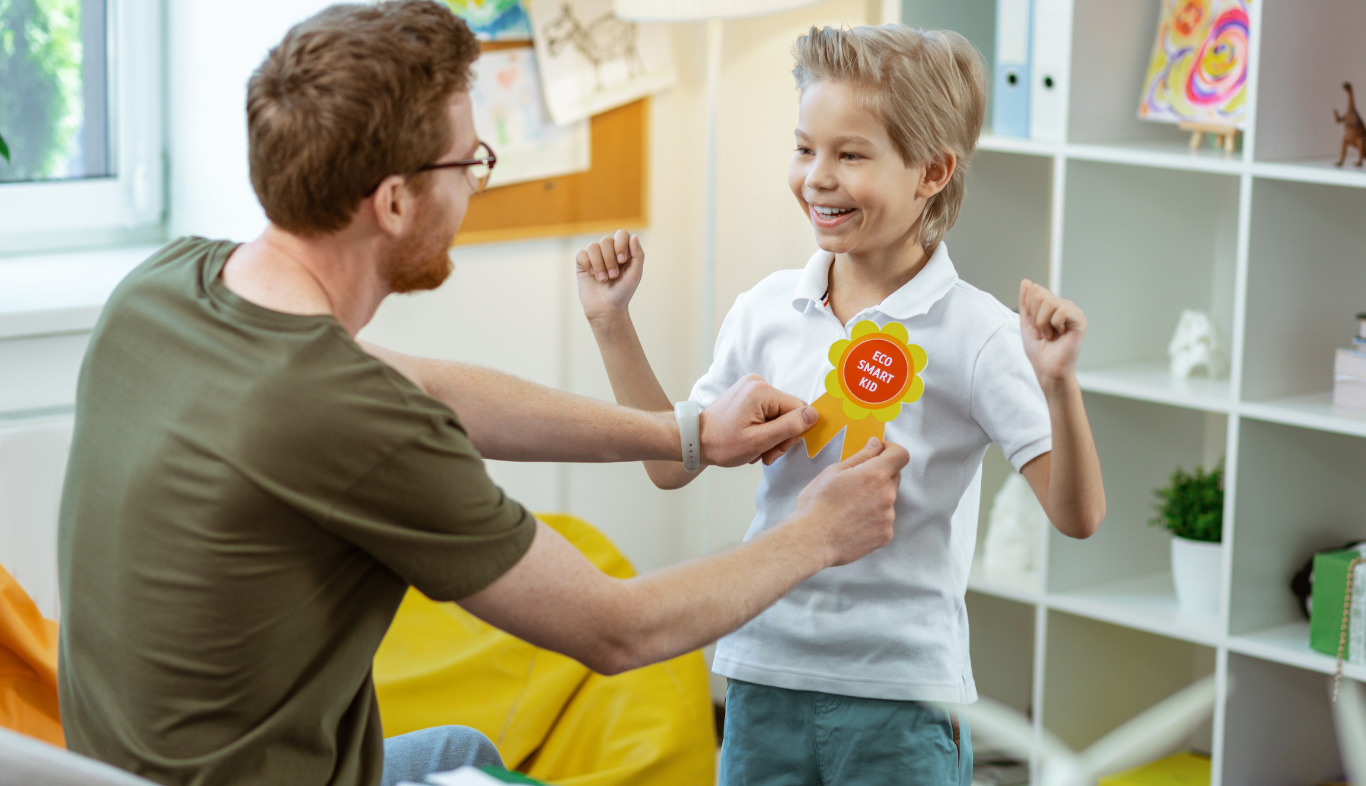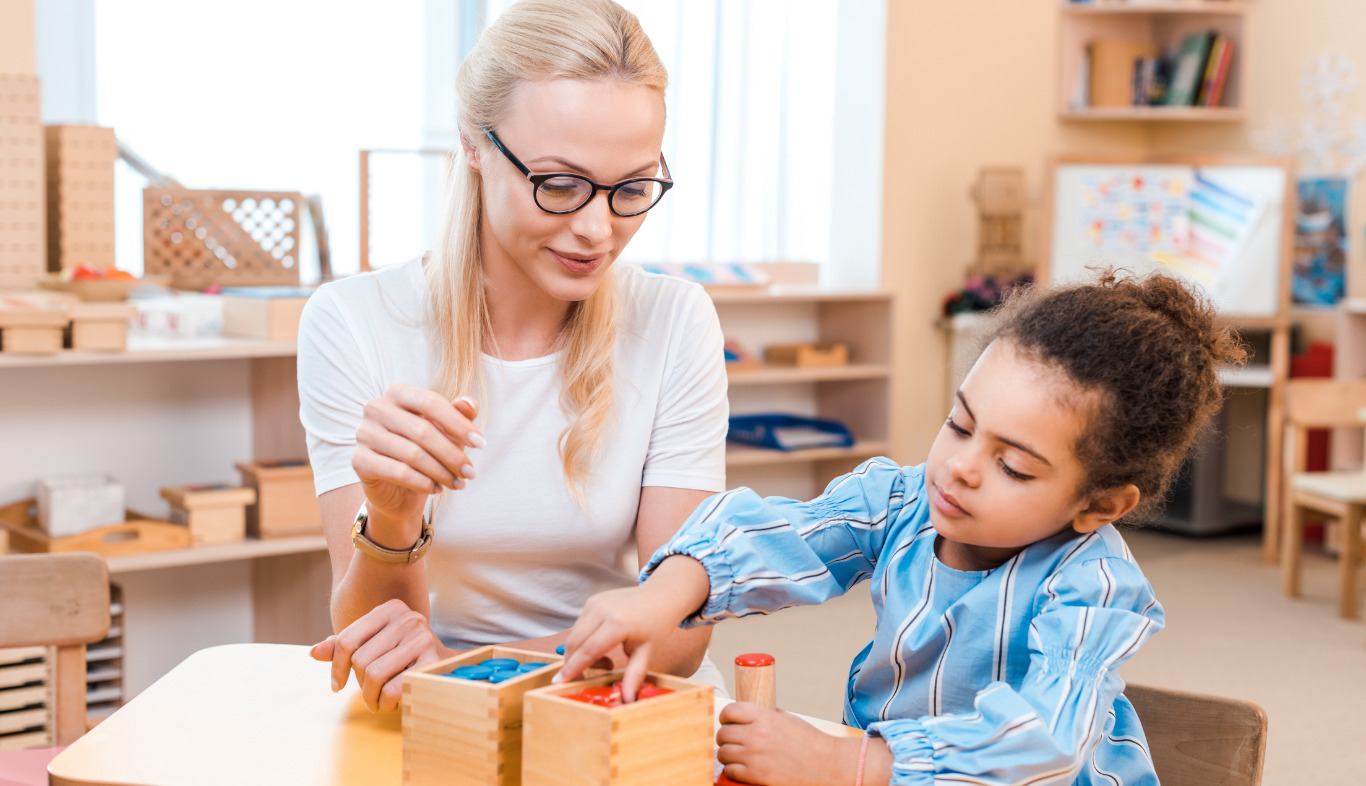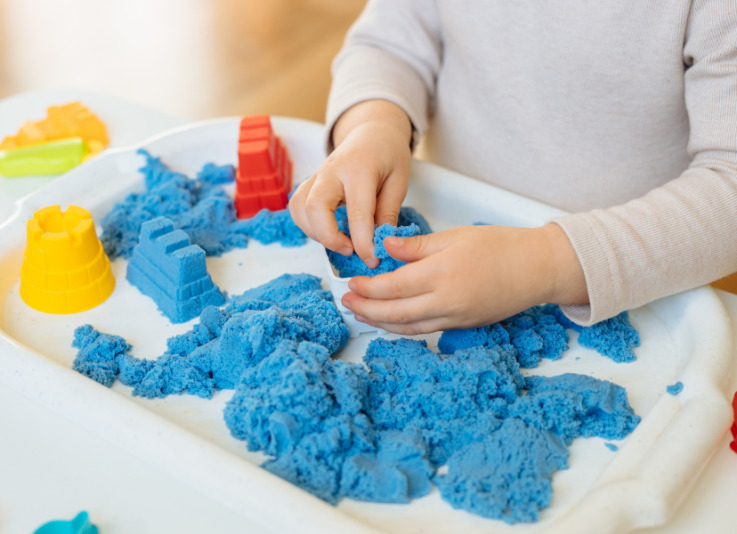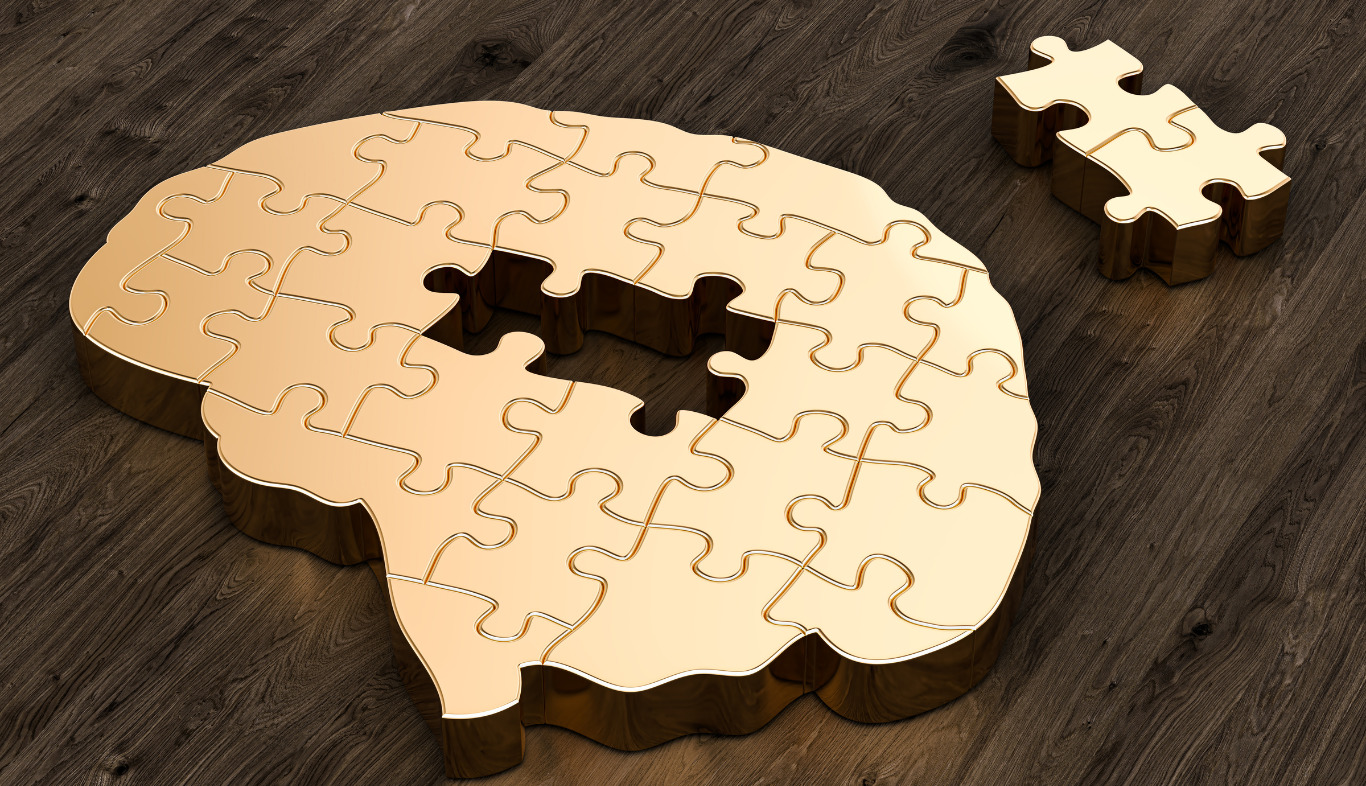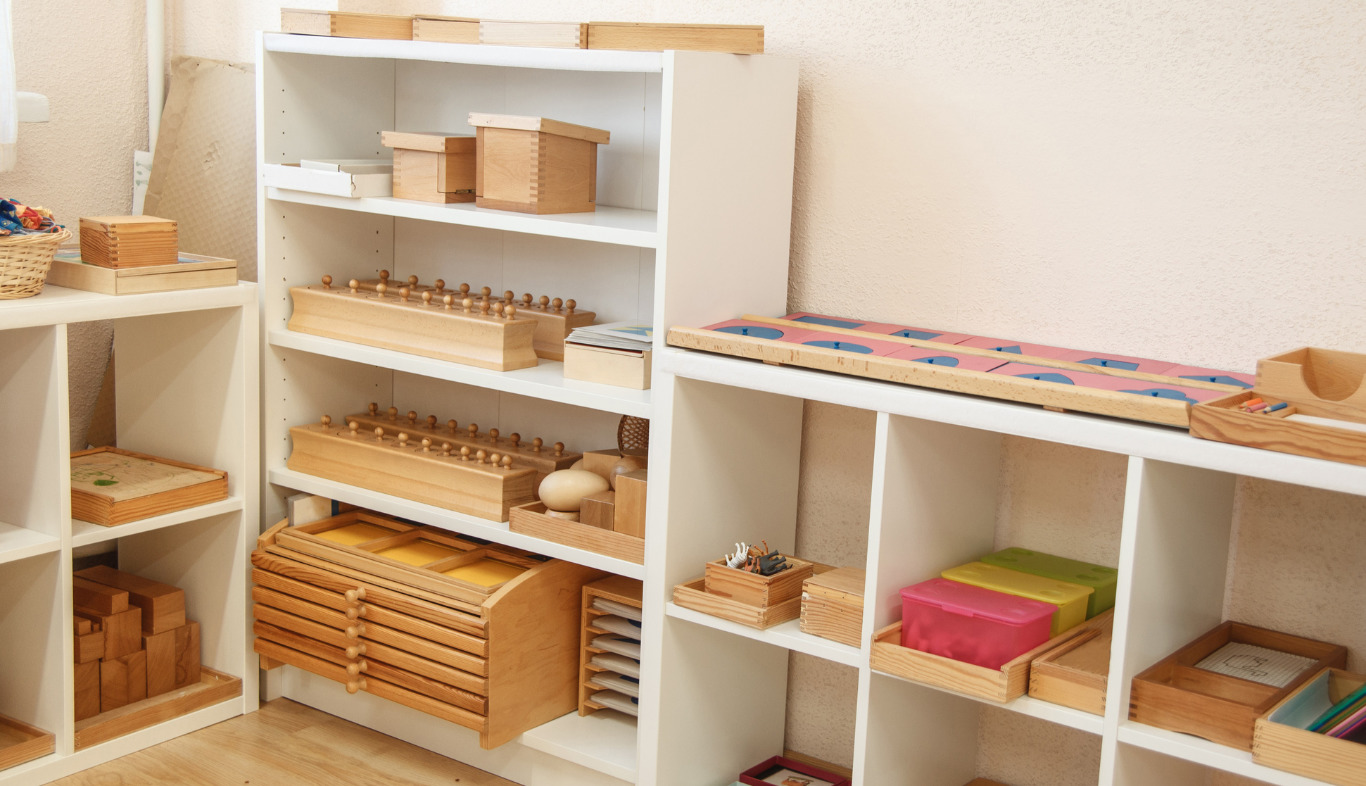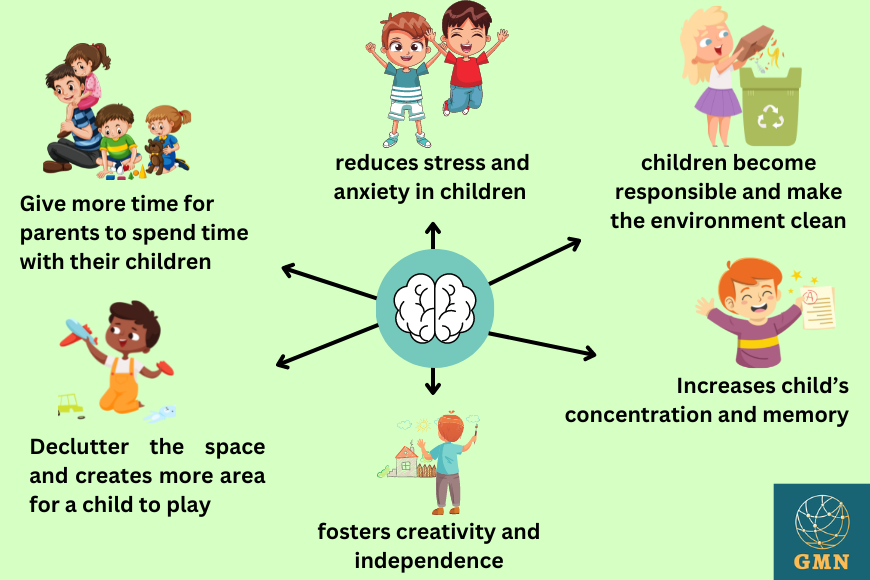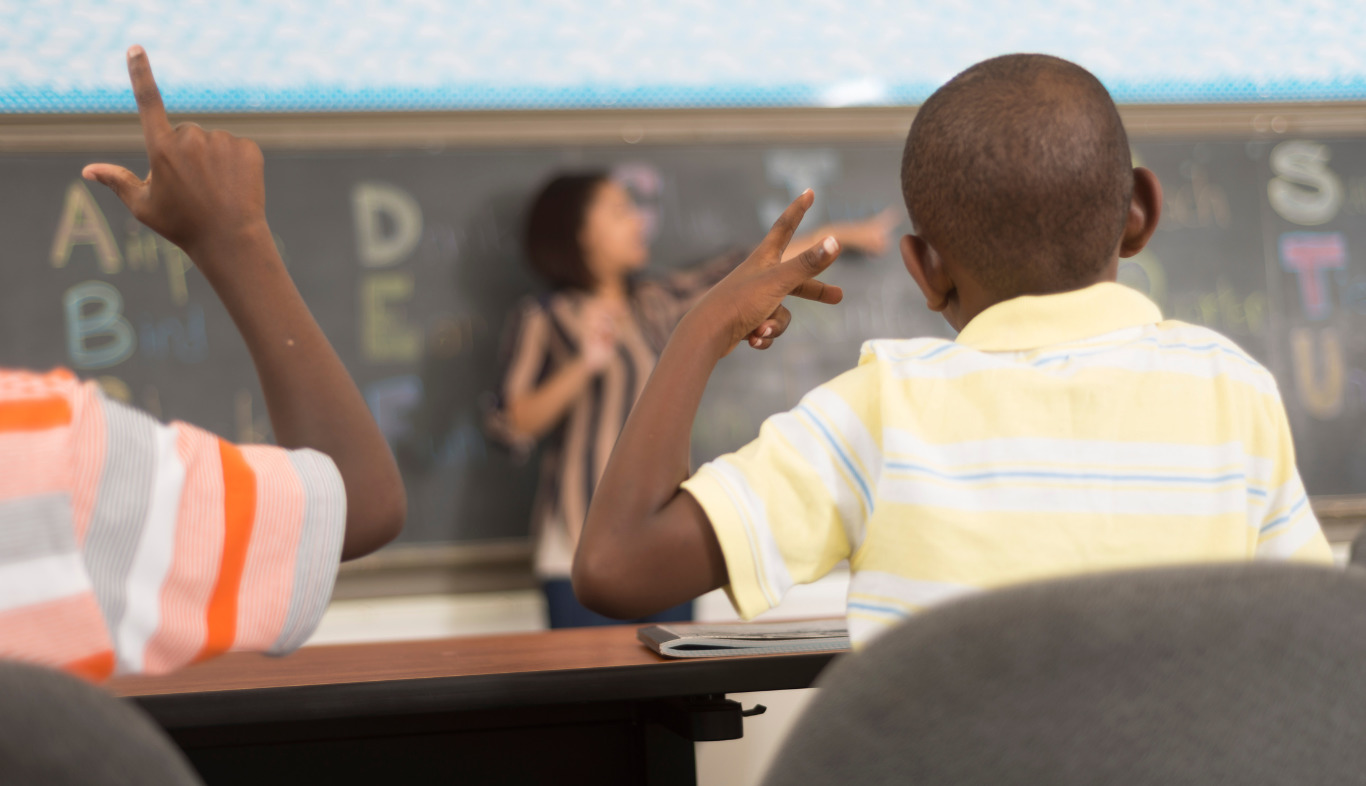Several pedagogical models of early childhood education are practiced in schools within the United States. Providing meaningful and hands-on learning experiences for all students has been a concern long before standardized assessments became the norm. Scholars have extensively researched on effective ways in which children learn, acquire, analyze, and process information.
The constructivist approach to early childhood education is one such philosophical approach, which includes pedagogical models such as Montessori, Waldorf (aka Steiner), and Reggio Emilia. These models emphasize and assess social and emotional skills through observation, as opposed to quantitative standardized tests. As indicated, the Montessori Method is one such example of a constructivist education model, and it has strong research-based evidence to support its effectiveness in academic achievement and overall well-being of children (Dhiksha & Suresh, 2016; Lillard, 2005, 2017; Lillard et al, 2021; Mallett & Schroeder, 2015; Marshall, 2017).
How does the Montessori Method help in the Academic Achievement and Well-being of Children?
More than 100 years of extensive research have demonstrated that the Montessori Method affords children better academic achievement and adult well-being as compared to other traditional or conventional models of education.
Through observation of children over her lifetime, Dr. Maria Montessori developed an understanding of child development and learning processes within children. Through these observations, she prepared an environment with development-based activities for children that promote independent learning. Such an environment not only stimulates the child’s natural development but also develops their problem-solving and critical-thinking abilities. One of the strengths of Montessori education is the child-centered approach in the classrooms. This allows children to learn by doing and become independent learners. This kind of methodology encourages children to master skills and achieve success.
A multitude of educational ideas is used by the Montessori Method, which also offers the foundation to put these ideas into practice. Numerous children have grown into successful, well-adjusted adults through a Montessori education.
Montessori Educational Opportunities and Outcomes
Standardized school assessments seek to quantitatively measure children’s academic achievement. The effectiveness and accuracy of these measures have been contentious and controversial since their inception. Conventional early childhood education programs are generally teacher-directed classrooms, where teachers are “on stage” presenting concepts and information for students to consume and acquire. The exams raised concerns about how to teach students who did not excel in them. However, there are still other methods of setting up the classroom that will allow all students to learn intuitively.
The Montessori method is one of those methods, where the curriculum delivers a quality program that involves the overall development of the child, be it social, emotional, cognitive, or kinaesthetic, and embraces the potential for significantly improving the academic outcomes.
The first longitudinal study of Montessori education outcomes led by Dr. Angeline Lillard et al., 2017 found that children in Montessori preschools demonstrate better academic performance and social understanding than children participating in a conventional method of education. Another study, conducted by Jane C. Manner (1999), mentions the Stanford Achievement Test whose findings indicates that Montessori students continued to produce higher mean scores in reading and mathematics than did the traditional education students.
Why Montessori Children’s Results are Better When Compared to Conventional Education Methods?
“Montessori education fosters social and academic skills that are equal or superior to those fostered by a pool of other types of schools.” as stated in research by Dr. Angeline Lillard.
The Montessori Method has taken a leap to prepare the blending of visual and auditory representations, which is crucial for successful reading. Significant progress has also been made in illuminating the brain mechanisms behind early reading and reading challenges.
To overcome these reading challenges, the Montessori Method of education introduces phonics. It is one of the well-researched and best foundational techniques of language development. Through phonics, it becomes easier for a child to understand and decipher the alphabet-sound code.
The use of phonics helps the children to read with the correct pronunciation of the letters, digraphs, blends, and phonemes. An article by Chloë Marshall states, “in the Montessori method, the letter-sound relationships are taught in an organized sequence, rather than being taught on an ad hoc as-and-when-needed basis (2017). The article also states that “the core of the Montessori curriculum is clear instruction of phonics within a rich language context, both spoken and written. The children are taught the sound-letter code before using it to encode words (in spelling) and decode them (in reading).
In addition to phonics and language acquisition, mathematics is also a strength of Montessori education. Montessori materials help children to understand math concepts in a more tangible manner. Developmental progression is used to ensure that math instructions are built on the learning capabilities of each individual child.
For instance, to introduce complex topics like combining and sorting of shapes, the child is first acquainted with Montessori sensorial materials like constructive triangles or geometric solids, or geometric cabinets. Activities with these resource materials help children recognize, name, and compare shapes effortlessly.
Similarly, to let the child comprehend mathematical concepts like addition and subtraction, materials like number rods, cards, counters, and spindle boxes are available in Montessori classrooms. Along with the sensorial materials, practical life activities like cutting fruits, folding clothes, and more such tasks are used in the Montessori classroom to introduce mathematical concepts like that of fractions.
The same thing is mentioned in research by Chloë Marshall. Marshall (2017) indicates that the use of practical life materials in Montessori classrooms to support the development of fine motor skills is a dynamic approach. The Montessori approach to reading using phonics, embedded in a rich language context, and giving math instruction a sensorial foundation are effective approaches to make a child enjoy learning which is not often present in conventional classrooms.
Mention of Academic Achievements of Montessori Children in a Research
The longitudinal study by Dr. Angeline S. Lillard and colleagues (Lillard et al., 2017) also states that an educational method that focuses on the overall development of the child rather than grades produces responsible, creative, and mature adults.
Across a range of abilities, children at Montessori schools outperformed the children in traditional education. Some of the differences that the team noticed through their research included:
- The children of Montessori schooling were significantly more creative and sophisticated.
- There was a significant difference with regard to the social and emotional behavior of the children of the same age groups.
- Children who attended Montessori schools demonstrated a sense of being reasonable, honest, and justified during interactions. They had a more emotionally positive approach.
- Montessori-educated children performed better in reading, spelling, grammar, and punctuation when compared to those who participated in conventional education.
Montessori education keeps children at the center of learning (student-centered learning). These unique points help Montessori students to perform well and demonstrate a mastery of various subject matters. To learn about Montessori education and how it differs from conventional education, please read our blog on this topic.
How does Montessori Education helps in the Socio-Emotional Wellbeing Of children?
We have so far explained the academic achievement of Montessori children and how it benefits the child’s development. It is interesting to know that the Montessori Method of education not only focuses on academics, but also on the social and emotional well-being of children.
The Montessori education model allows children to learn at their own pace. It focuses on educating the child as a whole. This gives children the freedom to gradually develop and master new skills and strengths, which in turn promotes personal independence, self-discipline, and better emotional stability. It also fosters interactions between the child with peers and the environment along with the development of democratic attitudes and values among people.
The children in the Montessori model perceived the positive impact of collaboration and group work, and this is found to be positively associated with heightened levels of self-efficacy and better emotional development as stated in a research by Dhiksha. J and Suresh A. The Montessori method of learning is based on experimental and exploring concepts. Self-correction and self-assessment are integral parts of the daily routine in Montessori classrooms. Hence, the students are open to criticism and corrections as they learn through errors. This teaches the children a lifelong practical lesson.
The research reveals that children who have high self-esteem, better social-emotional stability, and the capacity to interact well among people, are found to be more likable and attractive. They make better impressions on others.
In the Montessori Method, each child is considered unique and is given enough space to unleash the total potential of the child. It encourages independent learning, active exploration, and choice-making to enhance a child’s intellectual, physical, emotional, and social development.
Final Words
The Montessori Method of education is a pedagogical model that has been researched extensively and meticulously for more than a century. The above-mentioned evidence from rigorous studies regarding Montessori education is almost exclusively positive regarding the academic achievement of children. These studies have logically compared Montessori to other models of education.
These studies have also mentioned about the benefits of uninterrupted work periods in Montessori education that enhance the focus, attentiveness, discipline, and social and emotional skills in the children. Together, it provides better academic achievements and the well-being of children.
References
- Dhiksha, J., & Suresh, A. (2016). Self-esteem and academic anxiety of high school students with Montessori and traditional methods of education. Indian Journal of Health and Wellbeing, 7(5), 543–545.
- Lillard, A. S. (2005). Montessori: The science behind the genius (1st ed.). Oxford University Press.
- Lillard, A. S. (2017). Montessori: The science behind the genius (3rd ed.). Oxford University Press.
- Lillard, A. S., Heise, M. J., Richey, E. M., Tong, X., Hart, A., & Bray, P. M. (2017). Montessori preschool elevates and equalizes child outcomes: A longitudinal study. Frontiers in Psychology, 8, Article 1783. https://doi.org/10.3389/fpsyg.2017.01783
- Lillard, A. S., Meyer, M. J., Vasc, D., & Fukuda, E. (2021). An association between Montessori education in childhood and adult wellbeing. Frontiers in Psychology, 12, Article 721943. https://doi.org/10.3389/fpsyg.2021.721943
- Mallett, J. D., & Schroeder, J. L. (2015). Academic achievement outcomes: A comparison of Montessori and non-Montessori public elementary school students. Journal of Elementary Education, 25(1), 39-53. http://pu.edu.pk/images/journal/JEE/PDF-Files/3_v25_no1_15.pdf
- Manner, J. C. (1999). A Comparison of Academic Achievement of Montessori and Non-Montessori Students in a Public School Setting [Doctoral Dissertation (Ed.D.), Florida International University]. https://digitalcommons.fiu.edu/dissertations/AAI9946898/
- Marshall, C. (2017). Montessori education: a review of the evidence base. NPJ Science of Learning, 2(1), Article 11. https://doi.org/10.1038/s41539-017-0012-7
- Salazar, M. M. (2013). The impact of Montessori teaching on academic achievement of elementary school students in a central Texas school district: A causal-comparative inquiry [Doctoral dissertation, Texas A&M University]. http://hdl.handle.net/1969.6/515
Sensory Integration Strategies That Work Well For Children Who Attend Montessori School
In recent years, sensory integration has become a part of an important discussion in education. But it is talked about more frequently since the pandemic 2019 hit and outdoor time and the active play of children have declined dramatically. The majority of children spend more time watching screens than experiencing the world through their senses. Resulting in a varied range of sensory disorders.
To overcome this problem, schools in America and parents must identify, assess and diagnose sensory-sensitive needs in children and provide the necessary aid to address those needs.
What is Sensory Integration?
Sensory integration (SI) theory was developed by Dr. A. Jean Ayres in the mid-70s. According to this theory, we usually perceive that we have 5 senses – touch, smell, sight, hearing, and taste. But actually, we have seven senses. The other two are vestibular and proprioceptive. The vestibular sense is related to the body and movement; whereas the proprioceptive sense gathers information through muscles, bones, and joint movements. All 7 senses supply sensory information to the brain.
This information is then prioritized and organized to respond adaptively (Noddings, 2017a) has stated that Author Alicia Noddings references Carolyn Cantu’s article about stress management and self-regulation (2002). In this article about self-regulation and stress management, Cantu indicates that over 80% of the nervous system processes sensory information. This, in turn, enhances awareness and organizes the brain program, which affects perception, cognition, and knowledge.
Simply put, sensory integration encapsulates how we experience, interpret, and react to (or ignore) information coming from our senses. It is important in all the things that we need to do on a daily basis, such as getting dressed, eating, moving around, socializing, learning, and working.
Montessori education is well known to inculcate sensory integration in the classroom setting by providing a developmentally appropriate environment, tools, and multi-layered sensory opportunities to address the needs of children who are developing their senses – sensory sensitivity.
Importance of Sensory Integration Strategies
The use of intentionally designed materials, the use of senses, and the incorporation of movements in a rich sensory environment benefit the children in four main ways:
- Increased ability to focus on relevant materials in different environments. Children tend to learn best and retain information when the senses are engaged in activities.
- Reduced rate of self-injuries. It also calms an anxious or frustrated child as their senses get engaged in a different environment.
- General improvement of the nervous system results in higher cognitive activity; such strategies and tools help children become more perceptive, aware, and logical.
- Broaden and refine the senses. Once a child gets involved in various sensory tools, they develop their senses on a broader path; they also learn to interact socially.
How Does Montessori Education Help in Promoting Sensory Integration Among Children?
It was Maria Montessori’s belief that the first six years of a child’s life are foundational years when children experience rapid growth. In these years, intellectual development happens at a fast pace, while sensorial integration fosters and nourishes this development.
Dr. Montessori also referenced reflecting on the environment when looking at the cause of challenging behaviors in the classroom. Children’s behaviors, both good and bad, are a communication from the child (Granke, 2007: 231-243). For trained teachers, observing and reflecting on behaviors in the classroom can provide guidance for how to meet the individual needs of each child.
Montessori Education and Sensory Integration Strategies
According to Jennifer Hoyt’s Sensory Integration Materials in Montessori Classrooms, Montessori methods provide enough space for the movement of learning through the senses. When an educator adds enough sensorial materials in a classroom, it proves beneficial for the children to meet their varied needs.
In traditional classrooms, every child’s learning capabilities are treated the same. The educator just directs all the children in the same manner. In such an environment, some children may get confused with the resources and materials and lose interest. On the other hand, in a Montessori classroom, the environment is based on the interests and developmental stage of the child, enabling them to explore at their own pace. In such an environment, a child gets the proper space and materials to thrive and hone their skills to their full potential.
The Outcomes of Sensory Integration in the Montessori Curriculum
The Montessori Method incorporates sensory integration to meet the developmental needs of every child through various activities, such as sensorial and practical life lessons. These kinds of opportunities help develop manipulative skills, eye-hand coordination, and creative thinking skills.
Children can engage in a variety of these activities inside the classroom, and when appropriate, they can also be carried out outside. The purpose of adopting sensory integration strategies is to assist the children in being alert enough to concentrate on their learning.
Benefits of Sensory Integration to the Child Who Attends the Montessori School
Following are the Benefits of Sensory Integration Inside the Montessori Classroom:
- Executive Functioning: Montessori education helps children develop a chief executive function that increases periods of concentration and working memory. It helps children to solve complex problems by implementing reasoning and excellent planning skills independently.
- Eye-hand coordination: Montessori activities such as knobbed cylinders, transferring activities, sewing, etc. help children to develop better eye-hand coordination.
- Motor Skills: Montessori curriculum has varied activities that help in developing both fine motor and gross motor skills. These activities further develop prehension (ability to use the thumb against the fingers functionally), bimanual coordination (ability to use the two hands together in a functional manner), and midrange control (ability to control a movement throughout the full excursion).
- Discrimination and order: The sensorial activities in the Montessori curriculum help children broaden and refine the child’s senses. Every activity from the pink tower to thermic tablets to mystery bags, help children with discrimination and order. It also helps them become more logical, perceptive, and aware.
- Perceptual and Cognitive Skills: Montessori activities help children recognize the differences between varied sizes, weights, and volumes. They have an understanding and concrete experience of a continuum or range.
Benefits of Sensory Integration Outside the Classroom in the Montessori School
Noddings, A. (2017) has described in the research ‘When sensory sensitivity requires intervention: Assessment and treatment of sensory-sensitive children’ that a few movement activities like jumping, yoga, and wall push-ups are beneficial to improve sensory integration and can be incorporated into day-to-day Montessori classrooms.
An easy way to promote sensory integration is to allow enough space for the child for frequent moves. These activities help in channelizing the senses of the child, and in building gross motor skills.
Montessori education also promotes going out on excursions, music, dance, physical exercise, arts, etc. to support the needs of diverse children. Children naturally fidget interest in the work and develop patience, persistence, resilience, and problem-solving ability. Sensory integration works best when varieties of movement opportunities are available along with the tools.
What Else Can Be Included in The Montessori Classroom for Sensory Integration?
In addition to the resources used in Montessori Classrooms, many more activities and tools can be included for the children. These can be placed over a ‘sensory shelf’ for precise learning. Small fidgets, stretch/resistance bands, and squeeze balls of varying textures and firmness levels are hand-held tools that can be helpful for the child in channelizing the senses.
Some large-scale tools such as hopper balls, hanging bars, mini trampolines, or balance boards can be incorporated into the classroom. These can be used by individual children or they can be used in groups.
Noise-cancellation headphones, colored glasses, clay dough, ankle/wrist weights, and heavy lifting are some resources that can aid children in integrating their senses.
Final Words
The relationship between the child and their environment is significant. Children should be effectively and genuinely introduced to the learning materials or ideas they are attempting to master. Therefore, Montessori classrooms are ideal for encouraging sensory integration (SI) at a young age; they provide an optimal opportunity for children to attain the best results in their overall development.
References
- Cantu, C. O. (2002, November). Self-regulation and stress management. The Exceptional Parent 32(11), 41–47.
- Dunn, W. (2001). The sensations of everyday life: Empirical, theoretical, and pragmatic considerations. The American Journal of Occupational Therapy, 55(6), 608-620. https://doi.org/10.5014/ajot.55.6.608
- Granke, J. (2007). Doors of perception: Sensory integration for Montessori classrooms. The NAMTA Journal, 32(1), 231-243.
- Hoyt, J. (2018). Including sensory integration materials in a Montessori classroom to improve behavior outcomes [Master’s Thesis (M.S. Ed.), University of Wisconsin–River Falls]. https://amshq.org/-/media/Files/AMSHQ/Research/Action-Research/Including-Sensory-Integration-Materials-in-a-Montessori-Classroom-to-Improve-Behavior-Outcomes.ashx
- Luborsky, B. (2014). Occupational therapy and Montessori – kindred spirits: Moving towards a scientific and medical pedagogy. The NAMTA Journal, 39 (3). https://files.eric.ed.gov/fulltext/EJ1183213.pdf
- Noddings, A. (2017a). Supporting sensory-sensitive children in a sensory-intensive world. Montessori Life, 29(1), 34–39. https://amshq.org/About-Montessori/Montessori-Articles/All-Articles/Supporting-Sensory-Sensitive-Children-in-a-Sensory-Intensive-World
- Noddings, A. (2017b). Classroom solutions for sensory-sensitive students. Montessori Life, 29(2), 45-49. https://amshq.org/About-Montessori/Montessori-Articles/All-Articles/Classroom-Solutions-for-Sensory-Sensitive-Students
- Noddings, A. (2017c). When sensory sensitivity requires intervention: Assessment and treatment of sensory-sensitive children. Montessori Life, 29(3), 38–43. https://amshq.org/About-Montessori/Montessori-Articles/All-Articles/When-Sensory-Sensitivity-Requires-Intervention
How Does Montessori Education Foster the Development of Cognitive Skills in Children?
How wonderful it is to know and understand that the entire world is a child’s classroom environment. When a child’s classroom learning goes beyond the four walls, the knowledge becomes infinite. And this happens in Montessori education.
Children, in the Montessori environment, learn to see themselves as global citizens and notice the splendor of varied cultures and traditions. They tend to see the world as their classroom. And with this approach, the Montessori Method fosters comprehensive cognitive skills in the children – imaginative thinking, problem-solving skills, and a desire to learn and challenge oneself.
What is Cognitive Development?
“The child’s development follows a path of successive stages of independence, and our knowledge of this must guide us in our behavior towards him. We have to help the child to act, will, and think for himself. This is the art of serving the spirit, an art which can be practiced to perfection only when working among children.”–Maria Montessori in the Absorbent Mind.
Cognitive skill is the ability of a person to approach problems and get solutions. The way we perceive, process, store, and use information is referred to as cognitive ability. (Bacanlı, 2001; Harrison & Rainer, 1992)
During early childhood, the children build the strategies of these aspects in individual ways and their performance capacities are measured with their thinking ability and not their skills. (Gander & Gardiner, 2001)
To develop cognitive ability, it is essential and advantageous that classroom curriculum should follow the pattern that fosters this development in a precise way and at the right age. It is important to provide the right foundation for the child’s success later in life.
What is The Montessori Theory?
The Montessori Method of Education is based on the guiding principles of freedom, order, choice, peer teaching, free movement, creativity, independence, self-correction, and intellect. Montessori principles, Montessori activities, multi-aged classrooms, and long work periods categorize the Montessori method (Lillard, 2006) that promotes cognitive development and nurtures the child as a responsible, thoughtful adult.
Maria Montessori believed that learning and growing are inseparable and created materials that use real actions and objects to translate abstract ideas into concrete form. Children in multi-age classrooms, learn by observing and interacting with these materials and peers. Long uninterrupted working periods help them concentrate and solve problems.
How do Montessori Education Foster Cognitive Skills?
Dr. Maria Montessori created instructional materials and a learning environment that cultivated the innate drive of the children to learn. The children are given the freedom to select their learning materials or activities from the shelf and long work periods help them explore and think more about solving the problem. In other words, a Montessori curriculum includes many such resources and activities that are helpful for cognitive development.
A child needs to get involved in day-to-day activities and interactions to stimulate cognitive development. Here are 5 aspects of the Montessori curriculum that play a key role in fostering the development of cognitive skills in children.
- The Prepared Environment: Montessori education helps the child internalize the surroundings and explore the materials around them. Children are motivated to learn when they are given materials that are appropriate for their skill development in a prepared environment which is essential for cognitive development. Constructive triangles, for instance, are presented for making varied shapes out of them. Brown stairs are used to let the child comprehend varied sizes.
- Critical Thinking: Books and hands-on learning materials available in the Montessori curriculum encourage critical thinking. Educators provide age-appropriate books and activities to children that foster cognitive development by increasing vocabulary and critical thinking. Sensorial and practical life activities help the child build semantic memory, concentration, and problem-solving skills. A child tends to attain higher critical thinking, which in turn fosters cognitive development in children.
- Interactions and Communications: Montessori education encourages cooperative play or imaginative role play among children of mixed-age groups. It is a seamless way to develop strong interactive skills as they interact, tutor, and learn together. The younger children get help from the older ones in their work, whereas the older ones refresh their concepts and develop leadership qualities. This endeavors the children for better self-construction and enhances brain development.
- Problem-solving ability: In a Montessori environment, children are encouraged to organize their thoughts, solve problems and learn new concepts at their own pace. The long work periods provide ample time to explore and learn the concept. They learn to take turns, follow directions, and build strategies. Children are also stimulated to recognize and correct their own mistakes. Development of such abilities lays the foundation of problem-solving, good-decision making, and analysis skills, which are part of cognitive development.
- Concentration: Montessori emphasizes side-by-side work, which fosters concentration in children as they develop new learning skills. Resource materials like transferring activities, color sorting activities, threading and sewing, and many such activities, help a child enhance focus and concentration. It also develops vocabulary and independence.
Impact of the Above Aspects on Cognitive Development
With the correct educational base and active education like Montessori education, the child is nourished with the understanding of the following:
- The children start to comprehend the surroundings.
- The more they understand the concept and the process, the more questions children ask. This improves their thinking abilities.
- Children find the logic behind the concept and build interest in the process.
- Children show interest in research, which improves vocabulary, problem-solving skills, and decision-making skills.
- Children also develop better social and emotional quotients.
Tips to Develop Cognitive Skills in Children
Apart from the resources that are offered in Montessori Classrooms, some basic tasks done with teachers or parents also foster cognitive development.
- Allow the children to make mistakes to help them learn better. Celebrate their success.
- Provide them with a variety of activities on a shelf. It promotes independence and decision-making skills.
- Children love to imitate adults. Invite them to do age-appropriate household chores such as cleaning leaves, folding clothes, and cleaning tables to build their autonomy and confidence.
- When introducing any activity, do not rush in with a solution. Let the child build interest and solve the problem at their own pace.
- Build a child’s vocabulary and interest by asking questions like “what happens next?”, “what is this?” or “how will we solve this problem?”.
- Introduce the child to open-ended activities and encourage them to solve problems with a different perspective.
- Expand the child’s interests by offering them books, crafts, games, or excursions based on their interests. For example, if a child is fascinated by cars, provide them with additional books, crafts, games, and excursions related to cars.
Final Words
Intellectual growth or cognitive development is enabled by freedom, structure and order, exposure to the surroundings, and a peaceful environment. When children are offered new tasks, lessons, and opportunities, they tend to develop not by remembering but by understanding.
Montessori education is well suited for the development of cognitive skills from early childhood days. In a Montessori classroom, not only features of basic education but also lessons in practical life, sensorial, language, art, science, culture, and music are all part of a diverse curriculum. These lessons are delivered in a progression from simple to complicated and from concrete to abstract. This fosters the development of cognitive skills rapidly.
References
- Courtier, P., Gardes, M.-L., Henst, J.-B. V. der, Noveck, I. A., Croset, M.-C., Epinat‐Duclos, J., Léone, J., & Prado, J. (2021). Effects of Montessori Education on the Academic, Cognitive, and Social Development of Disadvantaged Preschoolers: A Randomized Controlled Study in the French Public-School System. Child Development, 92(5), 2069–2088. https://doi.org/10.1111/cdev.13575
- Denervaud, S., Christensen, A. P., Kenett, Y. N., & Beaty, R. E. (2021). Education Shapes the Structure of Semantic Memory and Impacts Creative Thinking. NPJ Science of Learning, 6, Article 35. https://doi.org/10.1038/s41539-021-00113-8
- Denervaud, S., Gentaz, E., Matusz, P. J., & Murray, M. M. (2020). Multisensory Gains in Simple Detection Predict Global Cognition in Schoolchildren. Scientific Reports, 10(1), Article 1394. https://doi.org/10.1038/s41598-020-58329-4
- Gentaz, E., & Richard, S. (2022). The Behavioral Effects of Montessori Pedagogy on Children’s Psychological Development and School Learning. Children (Switzerland), 9(2), Article 133. https://doi.org/10.3390/children9020133
- Kayılı, G. (2018). The effect of Montessori Method on cognitive tempo of kindergarten children. Early Child Development and Care, 188(3), 327–335. https://doi.org/10.1080/03004430.2016.1217849
- Novak, M., & Schwan, S. (2021). Does Touching Real Objects Affect Learning? Educational Psychology Review, 33(2), 637–665. https://doi.org/10.1007/s10648-020-09551-z
- Osborn, E. (2022). The Effects of Cognitively Engaging Exercise on Children’s Executive Functioning [Master’s thesis (Action research report), St. Catherine University]. https://sophia.stkate.edu/maed/473
Should it Stay or Should it Go: When is it Appropriate to Introduce New Montessori Toys, Activities, and Tasks to Children?
A child’s engagement in play begins in infancy and benefits their development. When children play, they interact with the physical and social elements of the environment, allowing them to discover challenges and learn new skills. This enhances a child’s overall development, health, and well-being.
Sir Ken Robinson’s TED Talk, “Bring on the Learning Revolution,” presents the concept of a student-centered environment. It is much needed to provide a firm foundation in early childhood for the development of social, emotional, cognitive, and physical skills in order to encourage lifelong learning.
Children learn best when they are engaged in a variety of activities. But does it mean that we should provide them with a plethora of toys and tasks to learn with?
It is essential to understand the “what”, “why,” “when,” and “how” behind the rotation of activities and materials in Montessori schools so that you can apply it successfully at home.
What is a Toy Rotation and Why is it Important?
The concept of activity rotation refers to the provision of limited activities or toys placed on a front open shelf, which are focused on the development of a range of skills, and then replacing them with another set once that competency has been achieved. The rotation of toys can be done weekly, monthly, or seasonally depending on a child’s interest and skill achievements. It helps in decluttering the space and increasing a child’s concentration.
In an article titled, “The influence of the number of toys in the environment on toddlers’ play”, the authors explained observations from their study which indicated that when children are provided with fewer toys in the environment, they engage in longer periods of play with a focus to explore and play more creatively (Dauch et al, 2017).
The concept of activity rotation also aligns with Dr. Maria Montessori’s observation that children are benefited from a clean environment. She discovered that children in a calm, decluttered, and structured environment often engage for longer periods of time. Additionally, this improves the concentration of children and makes them more responsible and independent.
However, the concept of toy rotation is not officially derived from Maria Montessori’s research, but it does complement her findings.
“I then came to realize that everything about the child should not only be in order but that it should be proportioned to the child’s use and that interest and concentration arise specifically from the elimination of what is confusing and superfluous” by Dr. Maria Montessori in The Secret of Childhood
Montessori emphasizes minimalism, arranging fewer objects neatly on low shelves with space between them. Therefore, introducing too many toys overwhelms children, resulting in a loss of focus and interest.
Benefits of Montessori Resource Rotation
When introducing new Montessori activities, toys, or tasks to children, it is important to do it in intervals. This way, the child will not become overstimulated and will explore the new items with ease. The rotation of Montessori activities or toys allows children to keep engaged in a deeper way and spend more time exploring. It has many benefits, such as:
- It increases a child’s concentration and memory.
- It fosters creativity and independence.
- It helps children to become responsible and make the environment clean.
- It helps declutter the space and creates more area for a child to play.
- It doesn’t make children overwhelmed and reduces stress and anxiety in children.
- It provides more time for parents to spend time with their children.
When Should You Rotate the Activities for Your Child?
There is no right age to start activity rotation for your child. However, one can start toy rotation when a child starts to interact with toys on their own.
The Montessori Method focuses on letting the child lead. Therefore, introduce the child to 5-6 Montessori toys or activities at a time and observe their interest and development needs. Once the child excels in a skill or you can rotate the activities.
This toy rotation is generally recommended till the age of 6 years, which is the beginning of the second plane of development. At this point, children start developing an interest in hobbies like reading, writing, and mathematics.
How Often Should We Rotate the Activities or the Toys?
Each child has different developmental needs. A resource material that is the most attractive for one may not be liked by the other at all. Generally, in a Montessori school, a rotation of activities is done at different times for different children, depending on their developmental needs.
Educators understand the needs of every child by observation, as this allows the children to comprehend the tasks better. In the Montessori method, there is no set fixed duration when the toys need to be rotated. You can, however, rotate activities once every two weeks or once the child reaches the required skill set. Introduce children to open-ended activities or toys as it helps in fostering creativity and builds problem-solving skills.
The Montessori method offers a unique space for books and research, so along with toys, a child must be introduced to books from an early age. Once the child has mastered the knowledge in the book, it should be rotated.
Invite the children in to witness the changes once the space has been prepped. This helps in building their interest and excitement to explore and learn.
What Steps Should be Taken While Preparing For the Montessori Activities Rotation?
In the Montessori educational method, having fewer resources for a child is always better, as it is beneficial in many ways. Here are some tips and tricks to keep in mind while preparing for the resource or activity or toy rotation.
- Introduce a child to open-ended toys/ activities to start with.
- Do not introduce a child to more than 8-10 activities at a time.
- Keep the surplus activities in a closed closet or somewhere out of reach and view.
- Prepare a list of activities and sort them by categories like pretend play, gross motor, fine motor, sensory, practical life, and creative arts, etc before introducing activities and start the rotation process.
- Introduce activities that help children develop 3-4 skills at a time.
- Keep observing your children’s interests and development needs before introducing them to new activities. If not done right, you can end up in “lost interest” or “agitated behavior” or “too easy” situations.
- To build a child’s interest, introduce books and activities.
- There are no set rules–do rotate toys when it feels right based on your observation.
- Rotate activities based on festivals or events such as Halloween, Christmas, fall, spring, etc. to keep the child’s interest.
- Involve your child in the activity selection process when planning to rotate them.
For guidance on how to set up a Montessori environment at home, click here.
Final Words
The Montessori method emphasizes on promoting the concept of less is more. Therefore, it is important to introduce a child to limited activities, toys, and tasks appropriately and rotate them on a timely basis to meet the child’s development needs. If we do it too often, the child will become bored with the new toy and won’t be interested in it anymore. On the other hand, if we do not introduce them to new things frequently enough, then they will not be able to explore their environment or learn about what is around them.
Children are a bundle of surprises, and sometimes they may renew their interest in worn-out materials. They can return to the objects that an educator might feel are easy. Children pick up skills with repetition and they like discovering novel ways to play with their old favorites and that is why rotation is important.
References
- Administrator, H. (2019, August 20). Montessori at Home: The Secrets to Successful Toy Rotation | Hollis Montessori School, NH. Hollis Montessori School. https://hollismontessori.org/blog/2019/8/20/montessori-at-home-the-secrets-to-successful-toy-rotation
- Becker, J. (2014). Clutterfree with Kids: Change Your Thinking. Discover New Habits. Free Your Home. Becoming Minimalist.
- Cambre, M., & Hawkes, M. (2004). Toys, Tools & Teachers: The Challenges of Technology. R&L Education.
- Dauch, C., Imwalle, M., Ocasio, B., & Metz, A. E. (2018). The influence of the number of toys in the environment on toddlers’ play. Infant Behavior and Development, 50, 78–87. https://doi.org/10.1016/j.infbeh.2017.11.005
- Vig, M. (2020). The Holistic Guide to Decluttering: Organize and Transform Your Space, Time, and Mind. Fair Winds Press.
How Sign Language Helps to Meet Diverse Needs in the Classroom?
Education reforms in the 21st century, along with changing needs and diversity in the classroom, require varied and effective teaching methods to provide meaningful learning experiences for children. A comprehensive, inclusive setting emphasizes more than just teaching the entire class.
In an article from 2012 published in the Electronic Journal of Inclusive Education, authors Virginia Heslinga and Erica Nevenglosky detail the challenges that schools are facing to make learning environments more inclusive by meeting the diverse needs of students. Educators and administrators acknowledge the reality of different learning styles and recognize the need for interactive learning that engages visual, auditory, spatial, linear, tactile, and kinetic styles of learning.
Thus, adding sign language as an additional language can promote a positive learning attitude to a classroom because it fulfills students’ various needs and styles. Learning sign language is a social-emotional learning experience that introduces students to a new perspective through a new language and culture. It also helps students improve their skills in writing, reading, and spelling or vocabulary.
What is Sign Language?
Sign language is any form of bodily communication, particularly using the hands, gestures, arms, and facial expressions. At times, when it is difficult to communicate through words, teachers prefer using sign language. Simple smirks, nods, or indications can be used to express sign language in a basic manner. Pressing the index finger against the lips to hush noisy children, raising hands to speak, and shaking hands to say hello are a few basic forms of sign language. Apart from facilitating communication with people from other regions, sign language also aids children and adults in a variety of areas.
There is no single cross-cultural sign language and according to an article from the AI-Media, the number of official sign languages used around the world today ranges from 138 to 300. The most common forms of sign language are American Sign Language (ASL), British Sign Language (BSL), and Australian Sign Language (Auslan).
Sign language can be utilized to bridge the gap when vocal communication is not possible, such as between speakers of mutually unintelligible languages or when one or more potential communicators have hearing difficulties.
How Does American Sign Language (ASL) help in Fulfilling the Needs of a Diversified Classroom?
American Sign Language has a long-term positive effect on a child’s confidence and self-esteem by improving their communication skills. Exposing children to this form of language may enhance their vocabulary and reading skills, which in turn may lead to better achievement academically. It benefits not only children with hearing disabilities, but also other children to communicate in a more effective way.
Benefits of American Sign Language
In early childhood education, introducing sign language has numerous benefits. Introducing American Sign language (ASL) in a diversified classroom helps in the following ways:
- Gestures and signs usually make things easier for children to understand. As their vocabulary expands, both their receptive and expressive abilities improve. They learn that speech can be represented with expressions and visual representations. Gestures and communicative expressions encourage the children to connect with advanced and varied cultures. They tend to build rapport with peers and understand nonverbal clues as an essential life skill for success. Students get to learn that all children do not speak the same language as theirs. To communicate with them, ASL plays an important role and with this, children of different cultures (e.g., hearing and deaf) can communicate more effectively.
- It encourages shy and reluctant children to participate in activities and they may become more comfortable communicating using sign language.
- ASL can be used to communicate with children during class. Along with the presentation, an educator can utilize signs to explain an activity to the kids. Children can also communicate with the teacher or their peers, using sign language while upholding classroom decorum and not disturbing the other children.
- It incorporates kinaesthetic and visual learning that makes the language more perceptible. Students who learn in a classroom environment with multiple language expressions will have a better understanding of communication than students who only use one language expression.
- Simultaneously, with the use of sign language, the development of motor skills also takes place concurrently with the language. As the children move their fingers to represent the signs, their gross motor skills are developed with the various folds of fingers.
- ASL is a visual language, so it is easier for pre-verbal children to use to express their needs. The ability to sign can help a child express their fundamental needs, such as hunger or pain, or even when they are upset, which typically prevents tantrums and frustration. Sign language creates a bond between parent-child and educator-child as this language requires eye-to-eye and tactile contact.
- When sign language is introduced in the curriculum, the understanding is done by each and every child as a child grasps visual expressions quickly. Various sorts of charts, graphic organizers, word lists, pictures, and alphabet cards are used for creating the right understanding of the daily curriculum. The children are encouraged to integrate through facial expressions and a peer-correct response could be created.
- Sign language is not only for the development of languages but also is a “brain booster.” The right hemisphere of the brain is more dominant for visual aspects and when it receives visual cues or signs it perceives them. Once received by the right hemisphere, the left hemisphere processes it. This way, when both sides of the brain work to decode the signs, synaptic connections are formed within the brain and across hemispheres. Hence, ASL is a brain booster as both hemispheres interact, which creates a second source of language for children to access. It also engages them in multisensory learning.
- Understanding that speech has visual symbols makes the development of reading skills come along easier as children enter school. After the integration of varied visual aspects, children can decode writing and reading quicker as compared to those who learn through other modes of the same lesson.
- Another important and interesting part of the usage of sign language in the classroom is that it increases the ability in our reaction time and peripheral vision. Reaction time refers to the amount of time that passes between the moment we perceive something and the moment we respond to it. Peripheral vision is what we can see around us without having to turn our heads.
How to Inculcate American Sign Language (ASL) in the Primary-Level Curriculum?
ASL can be used when teaching new concepts or when reinforcing previously introduced materials, such as
- Greetings: The first signs we can introduce to a child are hello, goodbye, good morning, namaste, etc., which are used every day. Teaching how to sign commonly used greetings helps the child communicate more effectively.
- Alphabets: teaching how to sign letters or characters of an alphabet (a to z) helps children to build reading skills more easily as they can learn to form letters and words using their faces and fingers.
- Numbers-teaching how to sign numbers helps children to learn about quantity and counting.
- Days of the week: teaching how to sign days of the week in sign language helps children to learn about various events and their occurrences.
- Colors: teaching how to sign colors helps children to learn about the colors present in their surroundings and how to differentiate them.
- Feelings: communicating feelings through sign language, such as sad, happy, hungry, etc., can help a reluctant child become more confident while communicating.
- Sight Words: It is the most common word that is used in our daily life. Teaching how to sign sight words helps a child in effective language development.
When teachers and educators use sign language along with language lessons, they can support the learning of all children with diverse needs and help them learn the concepts in a meaningful context.
Final Words
Sign Language adds one more way of communication to the child’s belt. In early childhood, it is easier to adapt to a new language easily and children grasp the knowledge quickly. It will also help to communicate where words could not play a role.
Children who learn sign language gain social acceptance, confidence, comprehension, and communication by learning through scaffolding, layering language, and promoting active and interactive learning.
References
- Cook, R.E., Tessier, A., & Klein, M.D. (2000). Adapting early childhood curricula for children in inclusive settings (5th ed.). Englewood Cliffs, NJ: Merrill Publishing.
- Doidge, S. (2021, November 17). 5 Ways to Bring Sign Language Into Your Classroom. Kami. Retrieved October 19, 2022, from https://www.kamiapp.com/blog/sign-language-in-the-classroom/
- Hubler, M., & Hubler, L. (1999). Time to Sign with Children Learning Guide. Palm Bay, FL: Time to Sign.
- Schneden, Angela M., “Sign to learn : sign language as a teaching tool in hearing classrooms” (2006). Graduate Research Papers. 1475. https://scholarworks.uni.edu/grp/1475
- Sign Language and Its Importance As you Teach | Education World. (n.d.). Retrieved October 19, 2022, from https://www.educationworld.com/blog/sign-language-and-its-importance-you-teach.State, Houston & Simpson, Cynthia & Lynch, Sharon. (2007). Sign Language: Meeting Diverse Needs in the Classroom. Exchange-Exchange Press. 176.



